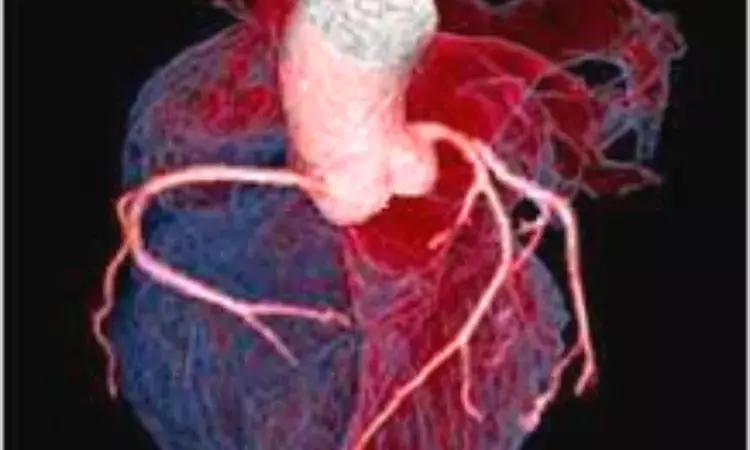- Home
- Medical news & Guidelines
- Anesthesiology
- Cardiology and CTVS
- Critical Care
- Dentistry
- Dermatology
- Diabetes and Endocrinology
- ENT
- Gastroenterology
- Medicine
- Nephrology
- Neurology
- Obstretics-Gynaecology
- Oncology
- Ophthalmology
- Orthopaedics
- Pediatrics-Neonatology
- Psychiatry
- Pulmonology
- Radiology
- Surgery
- Urology
- Laboratory Medicine
- Diet
- Nursing
- Paramedical
- Physiotherapy
- Health news
- Fact Check
- Bone Health Fact Check
- Brain Health Fact Check
- Cancer Related Fact Check
- Child Care Fact Check
- Dental and oral health fact check
- Diabetes and metabolic health fact check
- Diet and Nutrition Fact Check
- Eye and ENT Care Fact Check
- Fitness fact check
- Gut health fact check
- Heart health fact check
- Kidney health fact check
- Medical education fact check
- Men's health fact check
- Respiratory fact check
- Skin and hair care fact check
- Vaccine and Immunization fact check
- Women's health fact check
- AYUSH
- State News
- Andaman and Nicobar Islands
- Andhra Pradesh
- Arunachal Pradesh
- Assam
- Bihar
- Chandigarh
- Chattisgarh
- Dadra and Nagar Haveli
- Daman and Diu
- Delhi
- Goa
- Gujarat
- Haryana
- Himachal Pradesh
- Jammu & Kashmir
- Jharkhand
- Karnataka
- Kerala
- Ladakh
- Lakshadweep
- Madhya Pradesh
- Maharashtra
- Manipur
- Meghalaya
- Mizoram
- Nagaland
- Odisha
- Puducherry
- Punjab
- Rajasthan
- Sikkim
- Tamil Nadu
- Telangana
- Tripura
- Uttar Pradesh
- Uttrakhand
- West Bengal
- Medical Education
- Industry
Using CCTA for CAD diagnosis reduces mortality and MI hospitalization: Study

UK: A recent study has reported that coronary CT angiography (CCTA) improves CAD (coronary artery disease) outcomes by reducing mortality rates and hospitalizations for myocardial infarction.
The study findings, published in JACC: Cardiovascular Imaging, indicate that CCTA is an effective alternative to other modes of CAD assessment, such as invasive coronary angiography.
In 2016, the NICE (National Institute for Health and Care Excellence) recommended coronary computed tomography angiography as the first-line test for possible angina (CG95). Jonathan R.Weir-McCall, Royal Papworth Hospital, Cambridge, United Kingdom, and colleagues aimed to determine the effect of temporal trends in imaging use on coronary artery disease outcomes following the CG95 recommendations.
An interrupted time-series analysis was used to assess the impact of CG95. For this purpose, the researchers extracted investigations from 2012 to 2018 from a national database and linked-hospital admission and mortality registries. Adjustments to growth rates were made for population size, cardiovascular hospital admissions, image modality use, and mortality compared using Kendall's rank correlation.
The study revealed the following findings:
- One million nine hundred nine thousand three hundred fourteen investigations were performed for CAD, with an annualized per capita growth of 4.8%.
- Costs were £0.35 million/100,000 population/year with a rise of 2.8%/year mirroring inflation (2.5%/year).
- CG95 was associated with an increase in CCTA (exp[β]: 1.10), no change in myocardial perfusion imaging, and a potential modest fall (exp[β]: 0.997) in invasive coronary angiography.
- There was an apparent trend between computed tomography angiography growth and reduction in invasive catheter angiography across regions (Kendall Tau: −0.19).
- CCTA growth was associated with a reduction in cardiovascular mortality (Kendall Tau: −0.21) and ischemic heart disease deaths (Kendall Tau: −0.22), with an apparent trend with reduced all-cause mortality (Kendall Tau: −0.19).
"Imaging investigations for CAD are increasing," researchers wrote. "Greater regional increases in CCTA were associated with a more rapid decline in CAD mortality and fewer hospitalizations for myocardial infarction."
Reference:
Weir-McCall, J. R., Williams, M. C., Shah, A. S., Roditi, G., Rudd, J. H., Newby, D. E., & Nicol, E. D. (2023). National Trends in Coronary Artery Disease Imaging: Associations With Health Care Outcomes and Costs. JACC: Cardiovascular Imaging. https://doi.org/10.1016/j.jcmg.2022.10.022
Dr Kamal Kant Kohli-MBBS, DTCD- a chest specialist with more than 30 years of practice and a flair for writing clinical articles, Dr Kamal Kant Kohli joined Medical Dialogues as a Chief Editor of Medical News. Besides writing articles, as an editor, he proofreads and verifies all the medical content published on Medical Dialogues including those coming from journals, studies,medical conferences,guidelines etc. Email: drkohli@medicaldialogues.in. Contact no. 011-43720751


